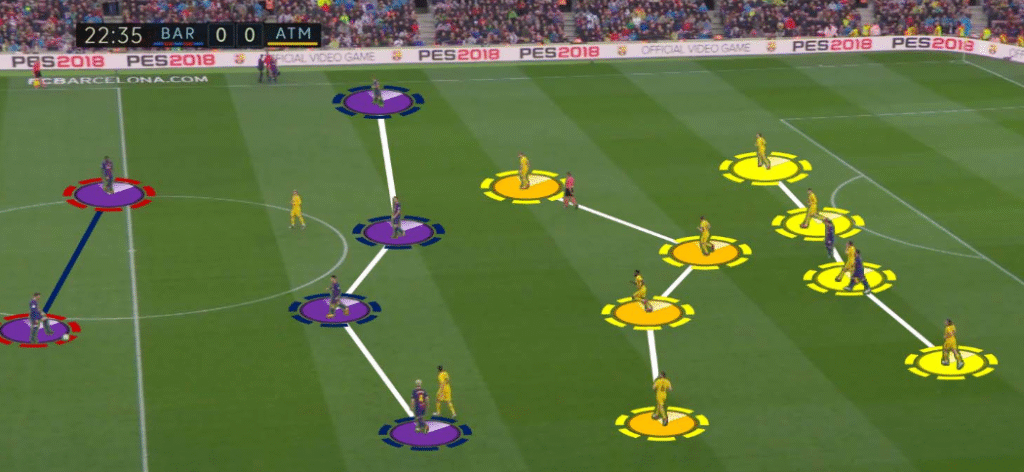Football is more than just a game; it’s a complex dance, filled with strategy, skill, and passion. Whether you’re a die-hard fan or just starting to explore the world of football analysis, understanding the intricacies behind each play can elevate your appreciation for the sport. Analyzing games goes beyond mere scoreboards; it involves delving into tactics, player performances, and even team dynamics. BaanStepBall is a place for football fans to meet and talk about happiness, sadness, nonsense, and substance, all the things they want to talk about.
Understanding the Basics: Rules and Positions
Football is a dynamic sport governed by specific rules that shape the game. These regulations dictate everything from how goals are scored to player conduct on the field. Understanding these basics is essential for any football analysis.
Each position on the team has its unique role. Forwards focus on scoring, while midfielders connect defense and attack. Defenders aim to thwart opponents, and goalkeepers protect the net with agility and reflexes.
Fouls can change the game’s momentum dramatically. Players must navigate physical challenges carefully, as infractions lead to free kicks or penalties.
Offside rules also play a critical part in strategy. A player cannot be closer to the opponent’s goal line than both the ball and second-to-last defender when receiving a pass.
Grasping these fundamentals sets a solid foundation for deeper football analysis, allowing fans to appreciate tactical decisions more fully.
The Importance of Statistics in Football
Statistics play a crucial role in football analysis. They provide concrete data that can transform subjective opinions into objective evaluations. Understanding player performance, team dynamics, and overall game effectiveness becomes much clearer through numbers.
Metrics like goals scored, assists, and passing accuracy offer insights into individual contributions. Meanwhile, team statistics such as possession percentage and shots on target reveal tactical approaches.
Beyond basic stats, advanced metrics like expected goals (xG) help analysts assess how many goals a team should have scored based on the quality of their chances. This deeper understanding aids coaches in refining strategies.
Moreover, statistics enable fans to engage with the game on a more profound level. They fuel debates about players’ greatness or coaching decisions while adding depth to match day experiences. In short, they enrich our understanding of every moment on the pitch.
Advanced Techniques for Analyzing Games and Teams
Advanced football analysis goes beyond basic stats. It involves a deep dive into tactics, formations, and player movements.
One powerful method is video analysis. Coaches and analysts use software to dissect game footage. This reveals patterns that aren’t visible during live play. You can assess how teams react to different situations or how players interact in various formations.
Another technique is using heat maps. These visual tools show player movements across the pitch, highlighting areas of influence. By studying these maps, you can pinpoint strengths and weaknesses on both sides.
Moreover, predictive analytics are gaining traction in football analysis. By leveraging historical data and machine learning algorithms, analysts forecast outcomes based on previous performances.
Understanding psychological factors adds another layer to your analysis toolkit. Player morale and team dynamics can significantly impact performance but often go unnoticed in traditional metrics.
Key Factors to Consider in a Successful Analysis
When diving into football analysis, context is essential. Understanding the specific circumstances of a match can shape your insights significantly.
Team dynamics play a crucial role as well. Each player’s form, chemistry with teammates, and even personal issues can impact performance on the field.
Tactics shouldn’t be overlooked either. Analyzing formations and strategies provides clarity on how teams intend to exploit weaknesses or defend against their opponents.
Don’t forget about environmental factors such as weather conditions and venue specifics. These elements can affect gameplay significantly.
Consider historical data between rival teams. Past encounters often reveal patterns that might influence current performances and outcomes.
Focusing on these aspects ensures a more robust understanding of the game and enhances your overall analysis skills in football.
Utilizing Technology for Enhanced Analysis
Technology has transformed football analysis in remarkable ways. Data collection tools now capture every moment of a game, providing insights that were once unimaginable.
Video analysis software allows coaches and analysts to break down plays frame by frame. This level of detail helps identify patterns and weaknesses in both opponents and their own teams.
Wearable tech is another game-changer. Players can wear devices that monitor performance metrics like speed, heart rate, and fatigue levels during training sessions or matches. Coaches can use this data to optimize player fitness and strategy.
Moreover, platforms utilizing artificial intelligence offer predictive analytics. They assess historical data to forecast outcomes based on numerous variables, giving teams an edge before they hit the pitch.
Incorporating such technology not only enhances understanding but also refines decision-making processes for more effective gameplay strategies.
Conclusion
Applying football analysis in real-life situations can greatly enhance your understanding of the game. Whether you’re a coach, a player, or simply an avid fan, utilizing these analytical techniques allows for deeper insights.
For coaches, this means adjusting strategies based on statistical trends and player performance. Analyzing previous games can reveal weaknesses to exploit and strengths to build upon.
Players who embrace analysis can refine their skills by studying footage of themselves and opponents. Understanding movement patterns helps improve decision-making during matches.
Fans benefit too. Engaging with advanced statistics enhances the viewing experience, turning casual observation into informed discussions. Knowing how various metrics influence outcomes fosters appreciation for the nuances of football.
By integrating these analytical methods into daily practices or match day experiences, one cultivates a richer connection with the sport. Football analysis is not just about numbers; it’s about translating those numbers into actionable insights that elevate everyone’s interaction with the game.

